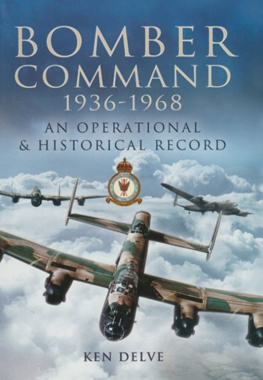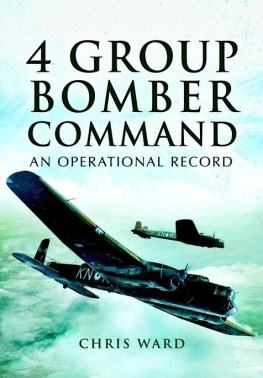THE RAF AND AIRCRAFT DESIGN
19231939
CASS SERIES: STUDIES IN AIR POWER
(Series Editor: Sebastian Cox)
ISSN 1368-5597
A Forgotten Offensive
Royal Air Force Coastal Commands Anti-Shipping Campaign, 19401945
by CHRISTINA J. M. GOULTER
Courage and Air Warfare
The Allied Aircrew Experience in the Second World War
by MARK K. WELLS
Despatch on War Operations
by SIR ARTHUR T. HARRIS
The Strategic Air War Against Germany, 19391945
Report of the BRITISH BOMBING SURVEY UNIT
Industry and Air Power
The Expansion of British Aircraft Production, 19351941
by SEBASTIAN RITCHIE
Air Power at the Battlefront
Allied Close Air Support in Europe, 19431945
by IAN GOODERSON
Russian Aviation and Air Power in the Twentieth Century
edited by ROBIN HIGHAM, JOHN T. GREENWOOD and VON HARDESTY
Sir Frederick Sykes and the Air Revolution, 19121918
by ERIC ASH
A Life of Marshal of the RAF Lord Tedder of Glenguin
by VINCENT ORANGE
The RAF and Aircraft Design, 19231939
Air Staff Operational Requirements
by COLIN SINNOTT
Westland and the British Helicopter Industry, 19451960
Licensed Production versus Indigenous Innovation
by MATTHEW UTTLEY
THE RAF
AND
AIRCRAFT DESIGN
19231939
AIR STAFF OPERATIONAL
REQUIREMENTS
Colin Sinnott
First published in 2001 by
FRANK CASS PUBLISHERS
This edition published 2013 by Routledge
2 Park Square, Milton Park, Abingdon, Oxon, OX14 4RN
711 Third Avenue, New York, NY 10017
Routledge is an imprint of the Taylor & Francis Group, an informa business
Copyright 2001 C. Sinnott
British Library Cataloguing in Publication Data
Sinnott, Colin
The RAF and aircraft design, 19231939: air staff operational requirements.
(Cass series. Studies in air power)
1. Great Britain. Royal Air Force History 2. Airplanes, Military Great
Britain Design and construction 3. Military doctrine Great Britain
History 20th century. 4. Air power Great Britain History 20th century
I. Title
358.41830941
ISBN 978-0-7146-5158-3 (hbk)
ISSN 1368-5597
Library of Congress Cataloging-in-Publication Data
Sinnott, Colin, 1931-
The RAF and aircraft design, 19231939: air staff operational requirements/Colin Sinnott.
p. cm. (Cass series studies in air power, ISSN 1368-5597; 9)
Includes bibliographical references and index.
ISBN 0-7146-5158-3 (hbk)
1. Airplanes, Military Great Britain Design and construction. 2. Great Britain. Royal Air Force History 20th century. 3. Military doctrine Great Britain History 20th century. 4. Air power Great Britain History 20th century. I. Title. II. Series.
UG1245.G7 S54 2001
358.418309410904-dc21
00-066028
All rights reserved. No part of this publication may be reproduced, stored in or introduced into a retrieval system or transmitted in any form or by any means, electronic, mechanical, photocopying, recording or otherwise, without the prior written permission of the publisher of this book.
Typeset in 11/12 Monotype Imprint by Cambridge Photosetting Services
Contents
Between pages 114 and 115
The editorial policy followed in the Studies in Air Power series is to explore all aspects of air power, including the operational, philosophical, human, economic and industrial dimensions. The connection between industry and government and the build-up of Britains industrial base in preparation for the Second World War is a theme which has already been explored in an earlier work in the series, Industry and Air Power by Sebastian Ritchie.
Colin Sinnotts fascinating study explores further the links between the aircraft industry and the Royal Air Force in the inter-war years. He successfully challenges much of the existing historiography, which is largely based on the inadequate interpretation put forward in the Official History, Postan, Hay and Scotts Design and Development of Weapons.1 It soon becomes apparent to any historian who consults the inter-war Air Ministry files relating to aircraft design and specification that the picture painted by the Official History of a design process driven forward by an industry dragging a somewhat reluctant Service bureaucracy in its wake is far from complete. The relationship was a symbiotic one, and even in cases where the development of an aircraft was supposedly a private venture, most famously perhaps in the case of the de Havilland Mosquito, the input and influence of the Air Ministry was profound. The Official Historians were led astray because they relied too heavily on the viewpoint put forward to them by the senior industrialists. The latter, of course, had a vested interest in showing the bureaucracy to be a brake on progress because of parsimony and lack of understanding, in contrast to the forward-thinking and technically advanced aircraft firms. Colin Sinnott clearly shows that this view was both simplistic and inaccurate.
He also explores in some detail not only the technical relationship between the Air Ministrys operational requirements staff and the industrys design offices through the medium of official specifications, but also the way in which the latter were directly influenced by government economic and strategic policies. Neither aircraft designers nor operational requirements staff operate in a vacuum. At the most fundamental level, an air force without a strategic bombing doctrine, or a government which believes it unimportant, will have no requirement for strategic bombers. Once the basic outlines of a strategic policy come into contact with operational doctrine new factors enter the equation. It might be thought that the basic offensive strategic doctrine of the Royal Air Force would have been translated directly into technical requirements for the best strategic bombers that could be built. In practice, however, the operational requirement for a bomber aircraft capable of attacking France, the perceived potential enemy (for lack of any other) throughout much of the 1920s, was different from that required for an aircraft capable of attacking Germany, particularly, of course, in terms of range. As range, speed, bombload and defensive armament are traded off against each other in any aircraft design, this complex equation can only be decided by the customer i.e. in this case the Royal Air Force. It is here that the claims for the success of private-venture designs begin to come unglued. A private-venture design without an operational role will fail through want of orders.
The service officers and aircraft designers were engaged in a difficult game. They were required to predict the future, basing their judgements in part on the experience of the past. That experience, however, was receding and becoming less relevant as time passed, and the element of uncertainly therefore increased. Inevitably, some of their knowledgeable guesswork proved inaccurate. By eschewing hindsight in assessing their efforts, Colin Sinnott has produced a most valuable and balanced study. As he says, the officers in the operational requirements staff were neither fools nor geniuses. While aircraft designers such as R. J. Mitchell or Roy Chadwick may or may not be considered geniuses, depending on ones point of view, at some point they had to persuade some level-headed RAF professional that their design could do the job.














